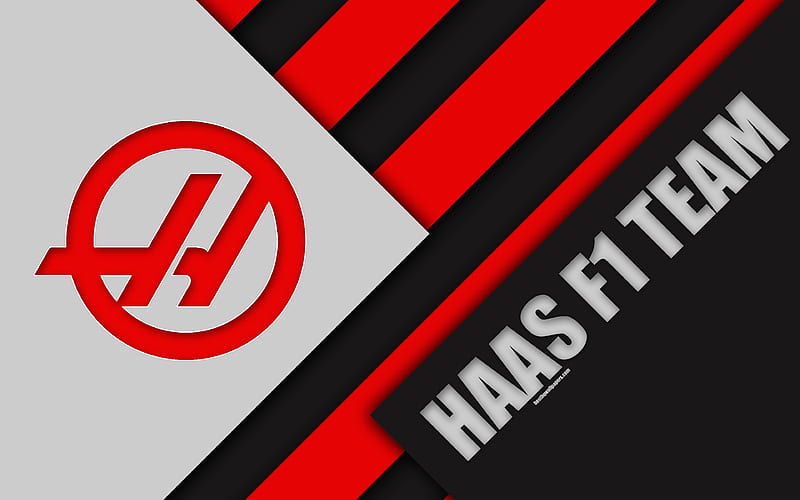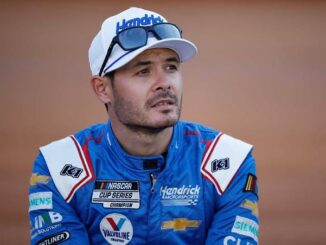KOMATSU EXPANDS ON COMMUNICATION LACK IN HAAS’ MONACO GP DQ
Ayao Komatsu expands on the reasons behind Haas getting disqualified in F1 Monaco GP qualifying, as he adds on remedies and more.
Its been a while that a car or both the cars of a F1 team got disqualified after a competitive session. It so happened after Monaco GP qualifying where both the Haas cars of Kevin Magnussen and Nico Hulkenberg got disqualified for a DRS issue.
The FIA technical delegate found that the uppermost rear wing element adjustable positions exceeded the maximum of the said 85mm in the Technical Regulations. The team admitted to the error on their part considering they brought a new design in Monaco.
Haas team boss Komatsu explained how a communication gap led to the race team not adjusting the wing to the desired gap. The designer knew about it but just missed on conveying the different handling from the previous wing to this one.
Komatsu admitted it to be a big error eventually as communication is key part and it was almost silly thing to happen. He doesn’t think it is due to Haas having different bases in US, UK and Italy, but just a simple communication lack between designer and race team.
The team managed to adjust it under parc ferme and were allowed to start the grand prix from the back of the grid, which eventually led a massive crash which ended both their races. Komatsu insisted on fine tuning its lack going forward.
What exactly happened –
Komatsu: “We had a new rear wing for Monaco, which was good. But the issue is it was designed a slightly different way, and then just a slight lack of communication from design intention to the guys who were doing the legality check on the trackside. The guys doing the legality check at trackside didn’t realise this change in the concept, where is going to be the limit, which is at both extremities. On previous wings, the limit was always around the centre, so they checked it in the same way. It’s no excuse. Regardless of any information, you should be checking across the whole span, but they weren’t. They were just concentrating on more centre. Then just the last bit on both extremities, it was too wide because of that. But the way, we should have set up the wing from the design intention, but set a maximum on both extremities, so basically most of the span actually were more crossed in the open condition.
“So, again if the designers made it absolutely clear that the design intentions are slightly different to the wings you’ve been using and you have to check it in this way, that would have helped. But at the same time, even without that information, the trackside legality check guys should have checked the whole legality surface. So it’s just a failure in management sense, unfortunately. There’s no performance gained, absolutely zero, but that’s not the point. The car needs to be legal. So we just have to accept this as a failure of the team and then learn from it, make sure we don’t make the same mistake again. We can’t. I had a team meeting earlier this morning just to explain that. We just have to accept it as a team, take it on the chin.
“It’s going to be a long afternoon in Monaco but we’ve only got ourselves to blame, so you have to take responsibility and move forward. It’s the same wing, but we can adjust it. With the DRS open gap, there is a mechanism to adjust it for where you are going to get to the maximum. Before in the previous wings, most of the lets say central span was going to be the critical area, so you adjust it to make sure that is just bang on legal, then to extremities, lets say more crossed but this one was the other way round, so by setting it in the middle shall I say, the both extremities, that was still open.”
How much off it was –
Komatsu: “It wasn’t small, you know? If it was like 0.4 millimetres or something, then that’s a different story. But it was multiple millimetres out, so it was big. It’s just because, basically, we set it up completely wrong. We made a parc ferme request to adjust it. So it was legal, and it was been approved. So, we adjusted it on both cars and we started from P19 to P20.”
Communication gap due to different bases –
Komatsu: “I mean, the designer who designed it, in his mind, it’s clear. This wing is set in the legal, but it’s got a different profile. Again, he just needed to think of one extra step to communicate that, to make sure that other people who don’t design the wing understand it. Again, the truck side people, like I said, if they had that highlight, it would have helped. But even without that, brand new rear wing, just don’t assume anything. You just have to check every single legal surface. That’s what we should be doing. So it’s, again, a bit of complacency, a bit of assumption, without actually thinking, OK, this is a new rear wing. It could be different. So we could have helped with multiple directions. So, again, it just needs to improve working as a team. I don’t think, I mean, I take your point. It doesn’t help that we are in a different, you’re talking about our Italy office and UK office? If everybody was in the same place, it would help.
“But at the same time, I don’t believe it’s the fundamental cause. Because, for instance, this year, we put lots of focus on the communication. And then with the restructure in the organisation, it really forces that communication across the site. And it’s been much better than before. So, initially, honestly, I thought, OK, this location is the fundamental issue. But it’s not. Ideally, it’s not. But as long as we are communicating, people understand each other. And once you’ve got a certain relationship, actually working virtually is OK. You know, but you’ve got to have the foundation. And so, yes, for me, it’s still a fundamental communication error that we can improve. I’m sure we’ll get to a certain stage, then we have to think about, oh, maybe this becomes the biggest issue, but it’s not. It’s not the kind of thing that could have been discussed over, like a water cooler moment. The guy who designed it could have seen the guy in the race team and said, oh, by the way, yeah, you might have to do the DRS thing.”
How communication takes place via drawing, etc –
Komatsu: “Yeah, obviously you communicate through drawing mainly. And if there’s a certain, let’s say, procedure that needs to be completely different, then we have a thing called a trackside instruction. So any new procedures or parts sometimes come with those instructions. But this particular one, because the guy designed it, didn’t think that way. So he just released the drawing, and it wasn’t even specified on the, let’s say, drawing. Clearly, this is different. There’s no specific instruction. But again, I don’t want to put all the blame on that, because trackside guys, even without that one, they all know it’s a brand new way. So we should be checking thoroughly, which we haven’t done.
Had to happen to learn –
Komatsu: “Yeah, it’s a shame that it had to come to this example. But honestly, what will define us is how we move on from here. This failure itself shouldn’t define us as a team. It’s how we learn from it, how we can improve the team from here. I think that will define the team. Of course it is incredibly frustrating but there’s nothing we can do at this minute, so we just have to learn from it and take it on the chin.”



Be the first to comment